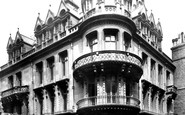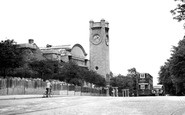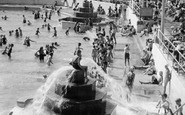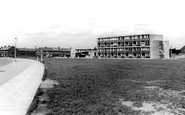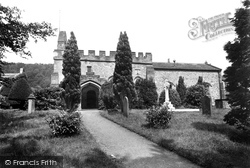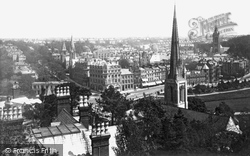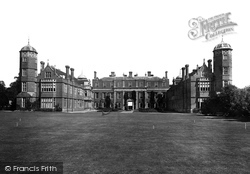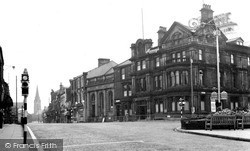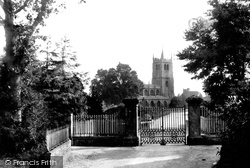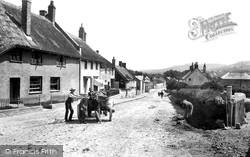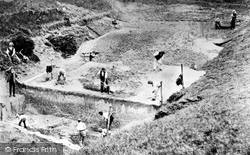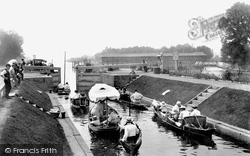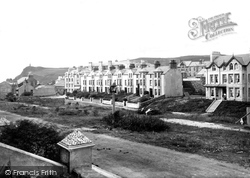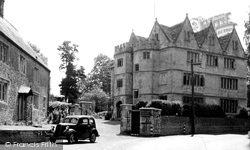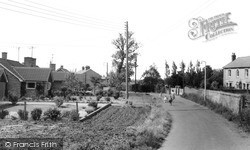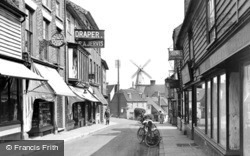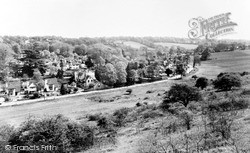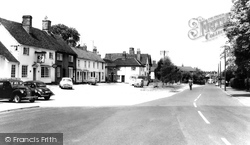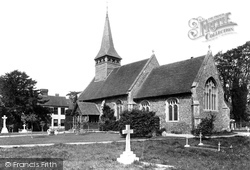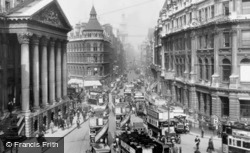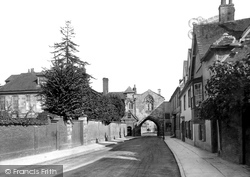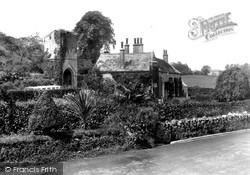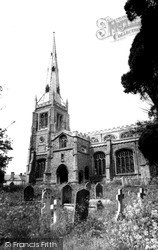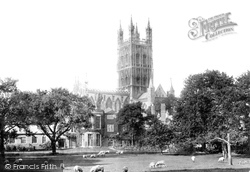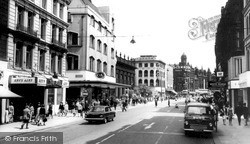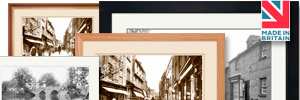Photos
Sorry, no photos were found that related to your search.
Maps
66 maps found.
Books
Sorry, no books were found that related to your search.
Memories
183 memories found. Showing results 11 to 20.
A Very Unusual Bank Building In Style
The bank's origins relate to Blackburn, Lancashire, then moved to Manchester where a later generation of the Cunliffe Brooks became a very wealthy local landowner. Opened an Altrincham branch on 7th April ...Read more
A memory of Manchester in 1870 by
Do You Remember?
Does anyone remember or know about a florist's shop called 'Jedith' which was situated in the parade of shops at the front of the cinema in London Road, on the South Circular opposite Forest Hill Railway Station? It was run by ...Read more
A memory of Forest Hill by
The Happiest Days Of Your Life
Brambletye school, well set between the beautiful Ashdown Forest and thriving town of East Grinstead on the Sussex/Surrey border was a paradise on Earth for any schoolboy with an aesthetically romantic (!) ...Read more
A memory of Brambletye House in 1959 by
Memories Of Leadgate And Iveston 1938 1943
I came to live at Leadgate when I was 12 years old and attended Leadgate Council School which was a large red brick building for infants and juniors, boys and girls. I was at the school for only 2 years, ...Read more
A memory of Leadgate in 1930 by
Collyhurst Flats
I lived at 6 Central Drive from the age of about 3 to the age of 14. I went to The Albert Memorial School on Queens Road and left there in '61 We had moved to Langley, Middleton in 1960. My name then was LINDA WHALEN, I had 3 ...Read more
A memory of Collyhurst in 1957 by
Bramley In The Years 1935 To 1941
Now 80 years of age I used to live with my Mum and Dad and brother Michael in Lincroft Crescent just above the Sandford estate. The houses were new and rather small though we were so happy ...Read more
A memory of Bramley in 1930 by
Hinton Blewett 1945 1946
I first saw Hinton Blewett on a late September day when arriving at my prep school, Colchester House. This was housed in Hinton Blewett Manor, which was its wartime home. Its true home was in Clifton, Bristol but ...Read more
A memory of Hinton Blewett in 1945 by
Flats In Palace Street
Hi, does anyone recall these flats? My grandparents lived there, Mr and Mrs Rowe. My grandad worked on the Barbican, he was a skipper on a fishing boat. They had a large family, my dad was one of their children, name of ...Read more
A memory of Plymouth in 1930 by
What Happened To Me
My name was Lynette Evans I’d just like to say hi to everyone that has shared memories of Splott. I remember so much, so clearly, I was barely 3 years old when I moved from Llanharran to Portmanmore Road. It was a ...Read more
A memory of Splott in 1964 by
The Flats
This is the new flats in Thirlmere Way, the top end near Royal Avenue, and you can see the Labour Club too on the left of the flats. The GUS ( Great Universal Stores) offices was built on the field as well but I don't remember the date. I ...Read more
A memory of Widnes in 1965 by
Captions
145 captions found. Showing results 25 to 48.
The interior, re-ordered by a later John Hutton c1830, contains his memorial with its fulsome epitaph, the Hutton family pew, and a Victorian royal coat of arms dated 1850.
The interior, re-ordered by a later John Hutton c1830, contains his memorial with its fulsome epitaph, the Hutton family pew, and a Victorian royal coat of arms dated 1850.
Bournemouth was a late starter as a seaside resort, for the land on which it stands was just wild and windswept heath until Mr Lewis Tregonwell built a holiday home there in 1810.
A late Elizabethan and 18th- century mansion described as one of the most important houses in Kent.
This is not the original one which gave the town its name, but a later one built on the same spot.
Stone urns were added to the gate posts at a later date.
A later king, Charles II, hid here briefly during his escape from the Battle of Worcester.The heart of the village is the steep main street, lined with some splendid bow-windowed cottages.
The church is of note, with a late-Norman font and a 16th-century tower.
A later excavation of the great ditch was carried out by H St George Gray in 1922, when he established that Avebury was built in the Neolithic age.
A later owner, Sir Robert Vyner, notoriously cooked one of his deceased servants, displaying the corpse in an open coffin to visitors - a macabre spectacle that delighted Samuel Pepys, who recorded
This is a late-Victorian development just off the seafront; the castellated roof of the Falcon's Nest Hotel can be seen rising above the terrace.
The Castle, in 1955 the Ravenscroft School, a boys' prep school, is a late 16th-century house of three storeys with gabled attics and a three-storey porch and stair turret, both crowned with medieval-style
Behind the brick wall is a late Victorian farmhouse, and opposite this some newly-built bungalows with new gardens. The Lanes lead to Over Mill.
A later excavation of the great ditch was carried out by H St George Gray in 1922, when he established that Avebury was built in the Neolithic age.
Situated on the High Street is The Studio, a Wealden Hall House, with a later gable on the left-hand side. This picture was taken before restoration.
Left of centre is the sprawling old house called Stagbury, a late 18th-century house demolished in the 1970s.
The Cock, run by H Painter, has a later door case, and Peterhouse has a Victorian shop window. The Globe Inn, beyond, run by Mrs Stiff, is 18th-century, but re-fronted in the 19th century.
It was a Tudor building inside a later shell: those chimney-stacks betray its true vintage.
Here we have a later view down Poultry and Cheapside, with Christopher Wren's spire of St Mary-le-Bow dominating the street.
A later view of St Ann's Gate, with motor cars in evidence in the street scene - now, the gate can be used by pedestrians only.
At a later date, stone from the cloisters and the top of the tower (seen behind) was taken to build a farmhouse.
The medieval church was as high as it was long - but a later miscalculation on the part of some 18th-century restorers left the steeple 2ft shorter than the nave and chancel.
Gloucester Cathedral has a Norman nave, later Gothic vaulting, an early Perpendicular choir and a later Perpendicular Lady Chapel; yet these disparate architectural styles form a coherent whole.
It was designed by Halfpenny, with a later 1839 tower and square spire by Chantrell. The street elevations show multiple bays with doorways with Gibbs' surrounds.
Places (1)
Photos (0)
Memories (183)
Books (0)
Maps (66)






















